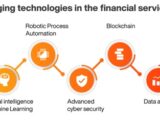Information Extraction in Natural Language Processing
September 1, 2023In the realm of Natural Language Processing (NLP), the ability to extract valuable information from unstructured text data is a pivotal task. Information Extraction (IE) techniques play a crucial role in transforming raw text into structured and actionable insights. From named entity recognition to relation extraction and event identification, IE powers a wide range of applications across various industries.
Types of Information Extraction:
Information extraction encompasses several core techniques, each tailored to handle specific linguistic nuances and complexities.
1. Named Entity Recognition (NER):
Named Entity Recognition involves identifying and classifying entities within text. Entities can range from names of people, locations, dates, organizations, to numerical values. NER forms the foundation for downstream NLP tasks, such as information retrieval, sentiment analysis, and question answering.
2. Relation Extraction:
Relation extraction focuses on uncovering meaningful relationships between entities. It’s a vital component for building knowledge graphs and understanding connections in vast amounts of text. From identifying author-publisher relationships in literature to tracking mergers in financial news, relation extraction reveals the hidden web of connections within language.
3. Event Extraction:
Events are the building blocks of narratives, and event extraction involves capturing these occurrences from text. Whether it’s news articles, social media posts, or historical records, event extraction helps in summarizing and understanding the underlying story. Temporal information extraction further enhances this process by identifying the timeline of events.
Challenges and Approaches:

Information extraction is not without challenges. Natural language is rich in ambiguity, polysemy, and context. Complex sentence structures and variations in writing styles pose additional hurdles. However, advancements in technology have given rise to various techniques:
1. Rule-based Approaches: Employing linguistic rules to identify patterns and structures in text.
2. Machine Learning Methods: Using supervised or unsupervised algorithms, like Conditional Random Fields (CRF) and Support Vector Machines (SVM), to learn from labelled data.
3. Pre-trained Language Models: Leveraging the power of models like BERT and GPT for feature extraction and context understanding.
4. Hybrid Approaches: Combining multiple techniques to enhance accuracy and adapt to diverse data sources.
Real-World Applications:
Information extraction is at the heart of numerous practical applications:
1. News and Media Analysis: Identifying key entities and events in news articles for trend analysis and summarization.
2. Healthcare: Extracting medical conditions, treatments, and patient information from electronic health
records.
3. Legal Document Analysis: Parsing contracts, agreements, and court transcripts to extract crucial details.
4. Financial News: Tracking mergers, acquisitions, and market trends from financial reports.
Future Trends and Ethical Considerations:
The future of information extraction in NLP holds exciting possibilities:
1. Multilingual and Cross-Modal Extraction: Extending information extraction to different languages and modalities like images and audio.
2. Bias Mitigation: Addressing biases in extracted information and ensuring fairness.
3. Contextual Understanding: Deeper analysis of context and semantically rich extraction.
Conclusion:
Information extraction remains a cornerstone of NLP, unravelling insights from the vast ocean of text data. As technology evolves, so does our ability to uncover hidden connections, enabling us to make informed decisions, understand narratives, and build knowledge-based systems that bridge the gap between raw language and meaningful information. With continued research and innovation, information extraction will continue to shape the future of natural language processing, opening doors to new realms of understanding and knowledge discovery.
Information Extraction is like a super-sleuth that transforms messy text into clear insights. It’s not just about reading words – it’s about understanding the story, finding facts, and making computers really get what we’re saying. As we keep exploring and coming up with new ideas, Information Extraction will lead us to exciting new discoveries and a whole new level of understanding in the world of language and technology.
In a nutshell, Information Extraction is like a treasure map for NLP. It helps us dig through mountains of text, revealing precious gems of information. As we journey forward, we’ll sharpen our tools and techniques, making this map even more accurate. Just imagine: a future where computers understand text like we do, helping us analyze news, medical records, and legal documents effortlessly. So, the story doesn’t end here – it’s a chapter in a book of endless possibilities. We’re crafting a world where language isn’t just words, but a highway to insights. With every click, search, and chat, Information Extraction is there, turning the text into a goldmine of understanding. So, let’s keep exploring, innovating, and unearthing those hidden treasures – one word at a time.



